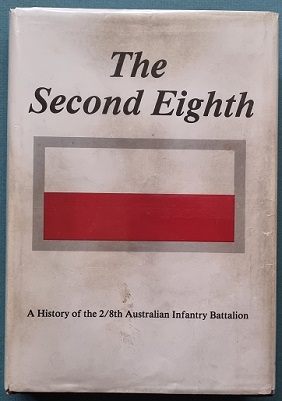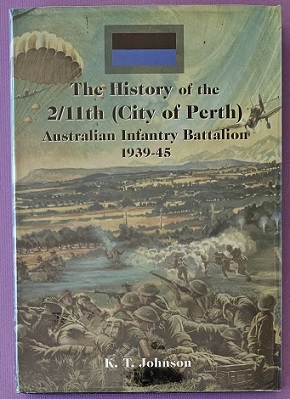Description
Title: On Parade – Official Journal of the 7th Battalion (1939-45) Association (Volume 2, No. 4 July, 1987)
Author:
Condition: Very Good
Edition: 1st Edition
Publication Date: 1987
ISBN: N/A
Cover: Soft Cover without Dust Jacket – 61 pages
Comments: The journal of the 7th Infantry Battalion (The North West Murray Borderers) Association.
After the First World War the defence of the Australian mainland lay with the part time soldiers of the Citizens Military Force, otherwise known as the Militia. The Militia was organized to maintain the structure of the First AIF and kept the same numerical designations. These Militia units were also distributed in the same areas that had raised the original AIF units. Consequently, Militia units were also known by the name of their shire. Thus, Victoria’s 7th Infantry Battalion was the “North-West Murray Borderers”. The battalion was headquartered in Mildura, with companies established in Merbein, Wentworth, and Red Cliffs. However, during the 1930s little was spent on defence and the Militia had few volunteers. In 1929 the 7th merged with the 38th Infantry Battalion, forming the 7th/38th Infantry Battalion, although in 1936 the two were unlinked.
With the start of the Second World War in 1939, the 7th, like many other Militia units, tried to volunteer as a unit for overseas service but was rejected on the grounds that it was needed for the defence of Australian. From early October the Militia were called up in two drafts for 30 days training. This was repeated in early 1940, this time for 90 days. Militia units were brought up to strength with men conscripted for service. Most of those called-up and allocated to the 7th were from the Sunraysia district, but others also came from Nhill, Hopetoun, Warracknabeal, Rainbow, Jeparit, Donald, Murtoa, Minyup, Rapinyup, and Horsham. There were also some from Maryborough and Kyneton.
During 1940 the battalion held a number of training camps, first at Mt Martha on the Mornington Peninsula, then Belcombe, and in 1941 at Nagambie Road, north of Seymour in Central Victoria. When Japan entered the war, the 7th was in camp at Belcombe and was immediately placed on a war footing and allocated a defensive position in the Dandenong area. However, the battalion was needed elsewhere and in began moving north in mid-February 1942.
The 7th arrived in Darwin on 25 February. The Japanese bombed the town throughout the year and the battalion got its first taste of action. It was also in Darwin that the 7th joined the 23rd Brigade. The brigade had been part of the 8th Division but, when two of its battalions were captured on Ambon and Timor, it was reformed with Militia units. The 7th joined the brigade’s other battalions – the 8th and 27th.
The brigade spent a year-and-a-half in Darwin. In April 1943 the 7th was relieved and returned to Melbourne, via Adelaide, for some well-earned leave. In November, the battalion again headed north, this time to the Atherton Tablelands for intensive training. However, the 7th was destined for more garrison duties.
As part of the Bougainville campaign, the 23rd Brigade relieved the American garrisons on the Outer Islands. In October 1944 the 7th took over from the Americans on the Treasury Islands and placed one of its companies on Munro Island.
The 7th’s role was to defend the airfield and conducted surveillance of the surrounding islands occupied by the Japanese. To escape the boredom and monotony, volunteers from the brigade worked as crews on American PT boats, raiding Japanese-occupied islands in New Ireland and New Britain.
In 1945 the 23rd Brigade moved to Bougainville, becoming responsible for the Central and Northern Sectors. In April the 7th left the Outer Islands and moved to Torokina, the Australian base on Bougainville. In June the battalion began moving along the Numa Numa Trail, in the Central Sector, to Pearl Ridge where they relieved the 27th Battalion. After years of static garrison duties, the 7th was about to go into combat.
Under the leadership of Lieutenant Colonel Harry Dunkley, the 7th dominated the Japanese. From 7 June to 15 August the battalion captured 25 Japanese positions, including Wearne’s Hill, Base Point 3, Tokua, and Sisivie. By the end of the war the 7th claimed 181 Japanese killed, 17 probably killed, and 11 wounded, for the loss of 25 killed and 54 wounded.
In September, with the war over, the 7th returned to Torokina and was transferred to Fauro Island the next month to helped guard the Japanese. The Japanese were concentrated on Fauro so they could be repatriated back to their country. The ranks of the 7th gradually thinned, as men were discharged, transferred, or volunteered for the occupation of Japan. By the end of February 1946 the last of the Japanese had left Fauro and the remnants of the 7th returned to Australia in March. The battalion was disbanded on 10 May 1946.





